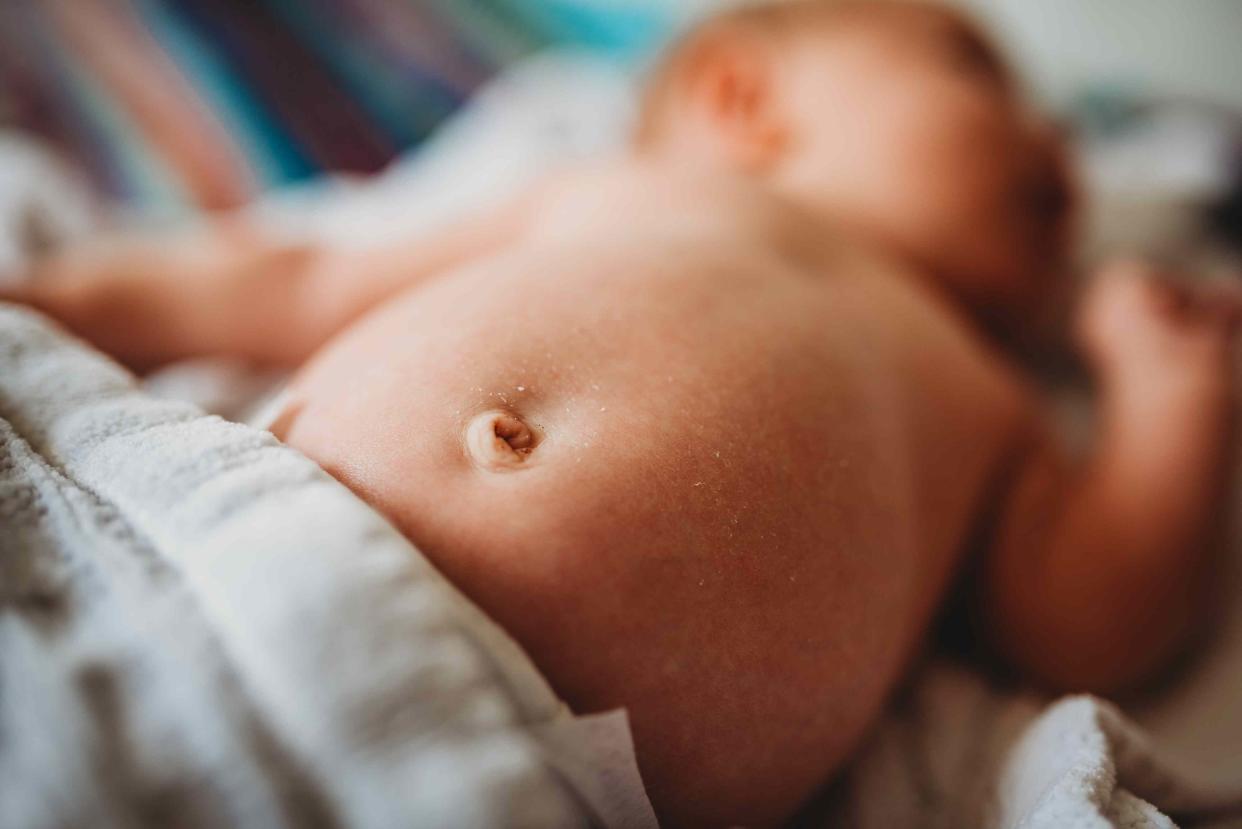Why Do I Have an Outie Belly Button?

Medically reviewed by Daniel Combs, MD
Outie belly buttons are usually a normal variation of how an umbilical cord injury heals. For some people, it results in an inward scar; for others, it develops as more of an outward bulge (colloquially referred to as an "outie").
A couple of medical conditions can lead to an outie belly button. These include umbilical hernia (in which the intestines push through a weakened abdominal wall and into the umbilicus) and umbilical granuloma (in which inflamed tissue forms around the belly button during the newborn stage).
This article explains the causes of outie belly buttons, how to care for them, and how they compare to "innie" belly buttons.

Can You Fix an Outie Belly Button?
Some people who are unhappy with the appearance of their belly button choose cosmetic surgery to reshape their navel. This type of plastic surgery is called umbilicoplasty. It can turn your outie into an innie if that is your goal.
This type of surgery is most commonly used during an abdominoplasty (tummy tuck). Some people may choose this procedure post-pregnancy to reshape their navel closer to its pre-pregnancy shape, while others may get a tummy tuck to resolve a belly button piercing scar.
Some believe an outie belly button results from how a healthcare provider cut or clamped the umbilical cord at birth or how caregivers took care of the umbilical stump. However, outie belly buttons are usually the result of the scar's shape after the umbilical stump falls off.
Related:Post-Pregnancy Plastic Surgery
Why Some People Have Outie Belly Buttons
Outie belly buttons form for various reasons, including by chance or due to a medical condition.
In Babies
The most common reason people have an outie is simply by chance. Outies are less common than innies. In one study examining the bacteria in belly buttons, 4% of participants were described as having outies.
The good news about outies is that there are fewer cracks and crevices for germs and bacteria to hide out in. Innies, on the other hand, are a breeding ground for bacteria.
Although outies naturally occur in some babies at birth, they are not genetic or heritable. In other words, a parent having an outie will not increase the chances of a baby developing an outie.
Umbilical Hernias
Sometimes protruding navels are caused by an umbilical hernia. These types of hernias occur in about 1 in 5 newborns when the muscles around the belly button don't close. This small opening then allows the intestines to push out and cause a bulge around the belly button.
Signs of an umbilical hernia include a bulge near the belly button with the following characteristics:
It comes and goes.
It is more pronounced when straining or crying.
It goes away when relaxed.
It may stretch the skin as it grows.
About 90% of the time, umbilical hernias close independently and do not require intervention. However, sometimes hernia repair surgery is warranted.
Umbilical Granuloma
An umbilical granuloma is the most common cause of an umbilical mass. It occurs in newborns after the umbilical stumps fall off. It is unclear why it happens, but researchers believe it may be due to inflammation around the base of the umbilical cord, likely due to infection.
An umbilical granuloma looks like a bright piece of red flesh where normal healing should have occurred after the umbilical stump falls off.
Treatment options include:
Watchful waiting
Topical application of silver nitrate
The double-ligature technique (tying a suture around it)
Applying salt to the granuloma
Umbilical granulomas occur in about 1 in 500 births.
Outie vs. Innie Belly Button Formation
The protrusion or concaveness of a belly button is, most often, determined by how your skin heals after the umbilical stump falls off. This process occurs one to two weeks after birth. What's left is a scar, commonly known as your belly button. Like all kinds of scars, they form differently on everyone.
There is nothing you can do to make an innie or an outie more likely. Outies do not develop because of how well a parent cleans the stump or how a healthcare provider clamps or cuts the cord.
How to Clean an Outie Belly Button
An outie belly button is far easier to clean than an innie because there are fewer openings where bacteria can get into and hide. Even so, belly button cleaning is the same whether you have an innie or an outie.
To clean your outie belly button, follow these steps:
While showering, wash your belly button with soap and water.
Dip your finger or washcloth in a saltwater solution and massage your belly button to loosen dirt and grime.
Avoid lotions on your belly button.
People with outies may not need too much time cleaning their belly buttons. However, outies can still have cracks and crevices. Pay attention to those areas, ensuring they are kept clean and dry to prevent infection.
If you have a piercing, take extra care to keep the area clean—and yes, you can have a navel piercing if you have an outie.
Summary
Outie belly buttons are not as common as innie belly buttons, but, most often, they are just another normal variation. How a belly button looks depends on how your skin healed after the umbilical stump fell off. Nothing you do will determine whether your baby will have an innie or an outie. Some medical conditions can cause protrusions around the belly button, including umbilical hernia and granuloma. It's essential to keep your belly button clean to prevent infection.

